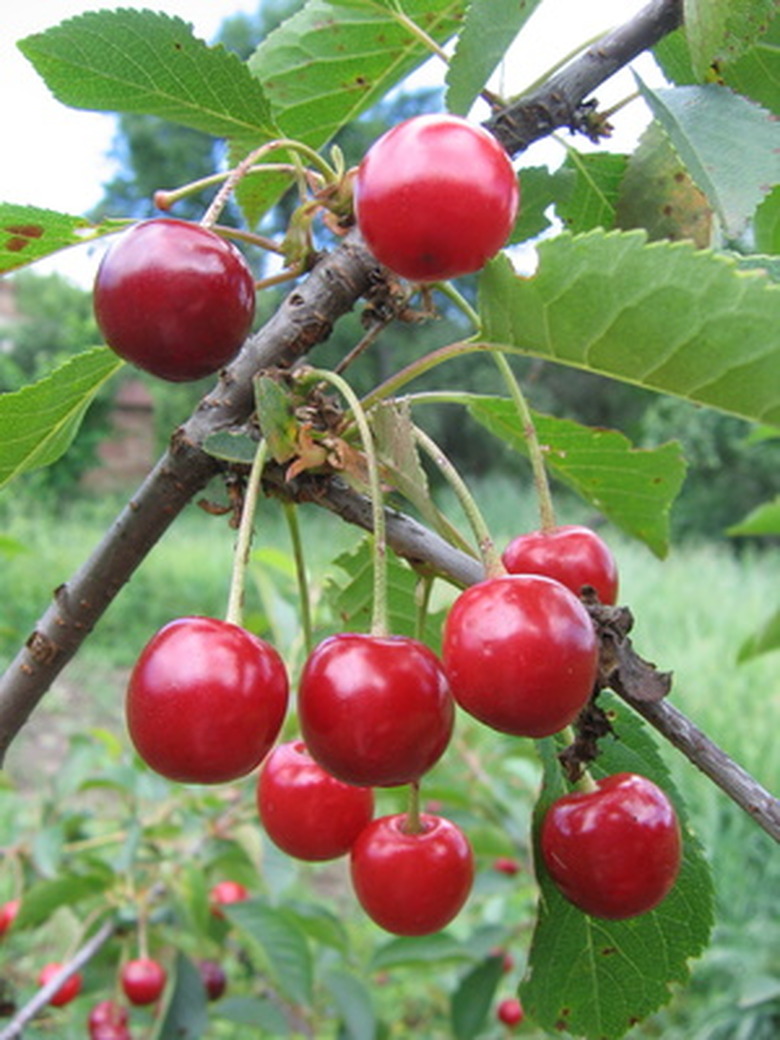How To Prune Old Cherry Trees
Things Needed
- Garden clippers
- Tree saw
- Pruning loppers
- Pole pruner
- Pruning paste or tar
Cherry trees can live a long, productive life. But you must prune them to keep them well-shaped, healthy and productive. When cherry trees grow large, they can reach the roof line of a two-story house, making the higher fruit impossible to harvest. If you need to prune an older, overgrown cherry tree, consider the size of the job, the tools you must use, and the danger of using sharp tools while you're on a ladder. It might be best to hire a professional arborist to make sure you are safe and your cherry tree gets the pruning it needs.
Step 1
Prune your cherry tree in summer after it has finished its yearly fruiting. Cut all broken branches first, using your tree saw or pole pruner. Also cut branches that appear dead, that bump into another branch or appear diseased. Always cut branches close to the trunk, but be careful not to cut into the branch collar, which is a raised area where the branch connects to the trunk.
- Cherry trees can live a long, productive life.
- If you need to prune an older, overgrown cherry tree, consider the size of the job, the tools you must use, and the danger of using sharp tools while you're on a ladder.
Step 2
Thin healthy branches that grow downward by cutting them back to their branch collar with your tree saw or pole pruner; this will enable light to reach the tree's center area. Also thin new shoots to a single branch—it's important to make thinning cuts at the top of the tree. This practice also helps increase airflow through the branches, which can help to prevent some cherry tree diseases.
Step 3
Make stub cuts to renew old spurs with clippers or loppers. Each year, it is a good practice to stub back and renew up to 20 percent of the tree's fruiting branches. Cut lower branches as long as 2 feet and upper branches at least 3 inches long—this will renew spurs, create a pyramid shape and allow light to reach your cuts.
Step 4
Make heading cuts to encourage branching with clippers or loppers. This practice encourages lateral branching, which will cause sufficient leaves to grow and enable the tree to produce the best possible crop of cherries. To make heading cuts, remove 1/3 to ½ of the old growth from every shoot. This practice will reduce the next year's crop but will make your tree strong and healthy.
- Thin healthy branches that grow downward by cutting them back to their branch collar with your tree saw or pole pruner; this will enable light to reach the tree's center area.
Step 5
Apply a non-asphalt pruning paste or tar to your cut areas immediately after you make each cut to prevent microbes from entering the tree.
Step 6
Clean up the area when you are finished to remove all branches, fruit, leaves and any other organic materials—this will help prevent the spread of diseases.
Tip
Summer is the recommended time to year to prune cherry trees because a fungal disease called silverleaf can enter cut areas when the weather is cooler and wetter.
Warning
If your tree is diseased, sterilize your cutting tool with one part water mixed with nine parts bleach between cuts.
